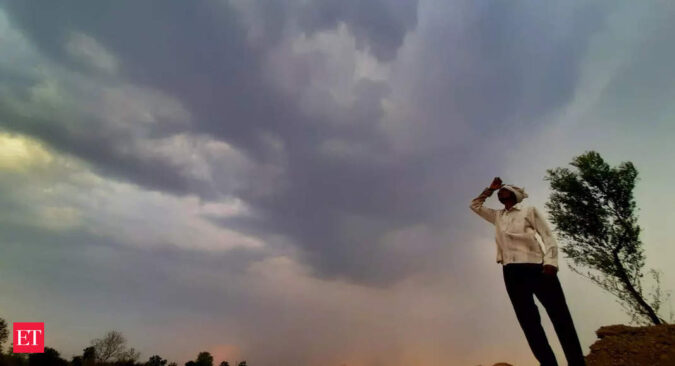The Southwest monsoon irrigates more than half of India’s farmlands, which eventually is key for the economy’s well being and our daily lives. It is crucial for the weather office’s normal monsoon prediction to come true, as the Mint Street and New Delhi are still fighting intense price pressures amid global recession risks.
Monsoon forecast & the misses
According to IMD‘s first long-range forecast, rainfall during June-September months is likely to be 96% of the long-term average despite El Nino threats, with an error margin of 5% of the long period average.
India defines average, or normal, rainfall as between 96% and 104% of a 50-year average of 87 centimetres for the four-month season beginning June.
Thus, the rain forecast is precariously placed on the lower end of the margin and a slip from there would mean below-normal rainfall, which will spell trouble for the economy. Also, the forecaster’s first long range forecasts (LRF-1) are usually slightly less accurate than the second long range forecast (LRF-2), issued in May-June.
Over the decade, April forecasts have come very close to actual rainfall numbers on two occasions – 2017 and 2021, when the error was just 1%. The predictions have been way off course in three of these years – 2019 when the difference was 14%, and 2016 and 2019 (9% each).
Nomura said the spectre of below-normal monsoons amid El Nino risks is looming.
“The IMD downplayed the El Nino impact, expecting such conditions to develop in the second half of the season and stating that there was normal or above-normal rainfall in 40% of El Nino years,” Analysts Aurodeep Nandi and Sonal Varma, said in a note.
IMD’s forecast is also in contrast with that of private forecaster, Skymet, which pegs ‘below normal’ monsoons at 94% of LPA, due to El Nino conditions.
The importance of no error
From policymakers to consumers and hundreds of millions of farmers toiling on the land under scorching heat will pray for adequate rains across the country to resurrect the agriculture sector, which accounts for about 18% of the economy and has significant power to decide prices of items from staple food to garments.
India’s agriculture sector is the main source of livelihood for some 60% of its population. Nearly half of India’s farmland, which has no irrigation cover, depends on annual June-September rains to grow crops such as rice, corn, cane, cotton and soybeans.
“Below normal monsoon will have an adverse impact on India’s growth and inflation. Specifically, because we are in a precarious position currently with rural demand just about picking up and CPI inflation estimated to moderate after remaining above 6% in the previous months,” Rajani Sinha, Chief Economist at CareEdge told ET Online.
Food inflation has remained high with a share of more than 40% to overall CPI inflation and core price pressure has also remained high. In such a scenario, any further spike in food inflation would have adverse repercussions for overall inflation. It will also adversely impact rural demand and overall consumption momentum, Sinha added.
Russia’s invasion of Ukraine last year had put the food supply chain in jeopardy, setting off the inflation bugbear to bite hard in a post-pandemic world. The price pressure has also been painful for consumers in India, who are shelling out more for almost everything from wheat, rice, pulses to fuel, while the unemployment rate keeps climbing amid multi-year high loan rates and decelrating growth.
Global rating agencies and key multilateral banks, including the IMF, have cut their growth views for India. The government is also finding it tough to dole out larger support to the economically weaker section or slash taxes further on items including fuel, as New Delhi aims to narrow fiscal deficit and put up a case for sovereign ratings to go higher from near junk.
To be sure, Nomura said the link to food inflation, however, is not immediate. In the past, food inflation has increased despite good rainfall and vice versa, which suggests there are many other factors that determine the food inflation outlook.
Below normal monsoon will affect rural demand and hence sectors like consumer durables, consumer non-durables, cement, paint, CareEdge’s Sinha said.
The adverse impact on the agriculture sector will also have a rippling effect on sectors such as automobiles that typically will see a dent in sales of two-wheelers to tractors, while even FMCGs selling items of daily needs will find it tough to push their products in the hinterland. A growth hit and the subsequent perils will also curb consumer spending in the urban areas, be it on housing, cars, travel to even catching a movie in the theaters.
Talking of movies, it is perhaps not very strange to link how Indians should pray and await for a good monsoon season much like villagers from Oscar-nominated Lagaan, where miseries due to drought force citizens to fight their colonial rulers for basic survival.
